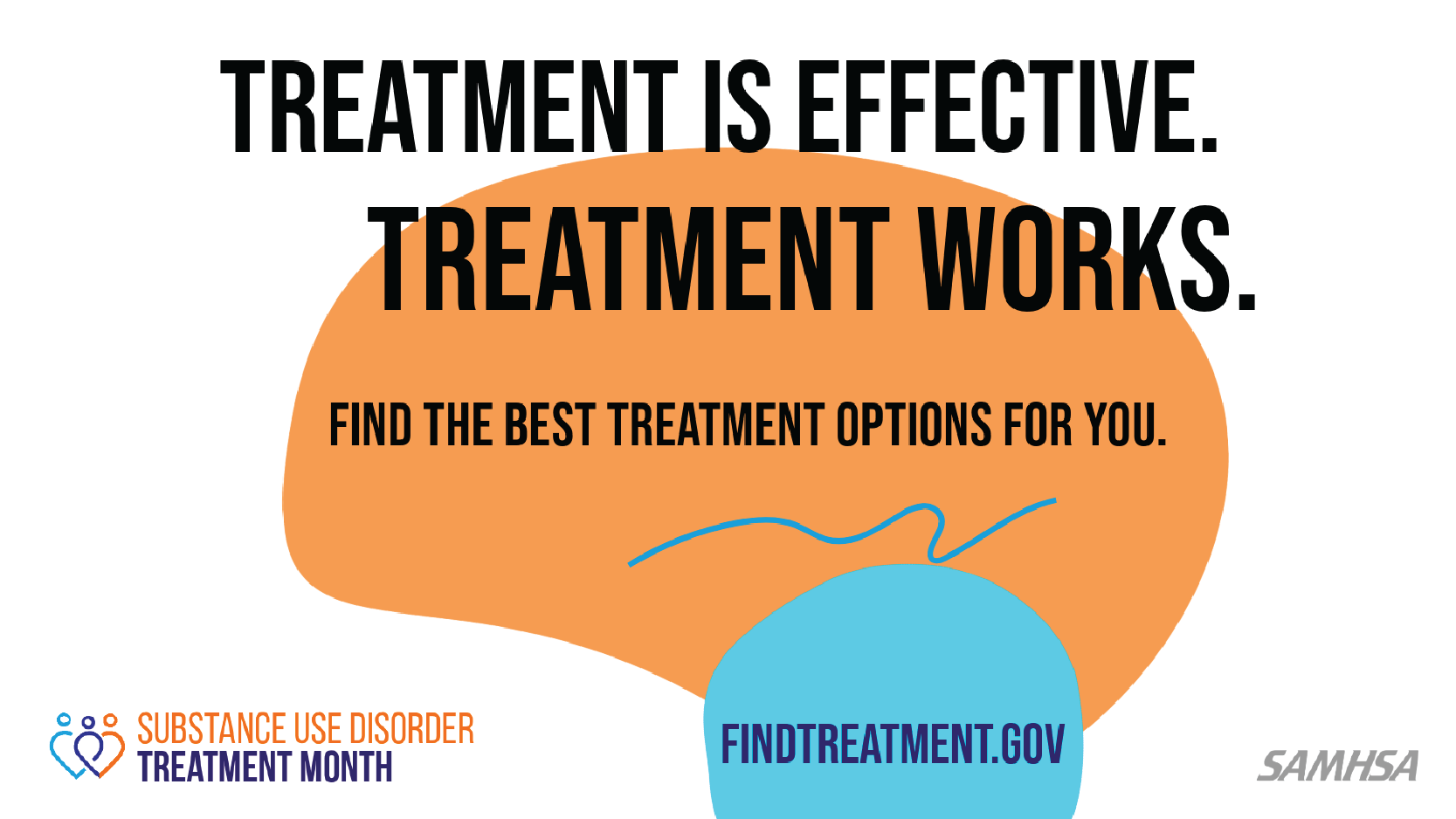
Many people make new promises to their health and well-being at the beginning of the year. To emphasize the value of expanding access to treatment for substance use disorders (SUDs), SAMHSA is launching “SUD Treatment Month” in January. This annual observance will be dedicated to spreading awareness about the effectiveness and availability of SUD treatment, giving people hope, and connecting individuals to treatment services and recovery supports that can improve their health and make their lives better.
What Is Substance Use Disorder?
SUDs are health conditions that typically develop over time in association with repeated substance use that changes the way the brain works. These changes can lead to compulsive cravings, reduced control over substance use, and continued use despite negative personal health and social consequences. SUDs range from mild to severe. Even when someone recognizes the harm caused by their substance use, they may struggle to manage or stop it. Not everyone who uses substances, though, develops a SUD. While every individual is different, SUDs often involve a complex interaction of genetics, biology, and environmental factors. For example, 50 percent of the risk of developing SUD is based on genetics, which can lead to SUDs occurring within families.
Early childhood trauma also increases a person’s risk, as does starting to use substances before the age of 14 and/or having a mental health condition like depression or anxiety. Many people with SUD often find they have at least one of these risk factors.
In 2023, 48.5 million people 12 or older, or 17 percent of the U.S. population, had a SUD within the past year, according to SAMHSA’s 2023 National Survey on Drug Use and Health (NSDUH). So, while not everyone with risk factors for a SUD develops one, SUDs are common.
How Is SUD Different from Addiction?
While the terms “substance use disorder” and “addiction” are often used interchangeably, they aren’t identical. Addiction refers to the most severe stages of a SUD. Not everyone with a SUD will experience addiction. That is especially true for alcohol use disorder, since most people with this condition have a mild severity. No matter the stage, people with a SUD can benefit from treatment and support, recognizing that SUDs are often long-term health conditions that can carry risk of recurrence even after years of recovery.
How can a SUD be detected?
Treatment and support start with recognizing that a person may have a SUD. Health professionals typically identify that a person might be at risk for a SUD by asking screening questions about someone’s use of substances. The diagnosis of a SUD is then made based on the person’s ability to control their use, and how it is impacting their health and well-being. The number of criteria, or symptoms, that a person has (as described in the Diagnostic and Statistical Manual of Mental Disorders (DSM-5), Fifth Edition, from the American Psychiatric Association) determines the severity of their SUD. The DSM-5 recognizes SUDs associated with 10 different classes of drugs that include alcohol, caffeine, tobacco, and cannabis to opioids, stimulants, hallucinogens, inhalants, sedatives, and hypnotics. Individuals also may recognize that their relationship with substances is causing them problems, or their family members, friends, or co-workers may be worried about the impact substance use is having on a person. In these instances, screening tools such as SAMHSA’s Screen4Success may be helpful to gather information before seeking help from a healthcare professional or peer support.
Treatments for SUD
Once a SUD has been diagnosed, there are several treatment options to consider, including the setting in which to receive care. For example, some people will do well with treatment from their primary care provider while others may need more intensive treatment in a specialty SUD treatment facility. The specific combination of treatments and settings for care should be based on the individual’s needs and may change over time as the person responds to treatment. Research shows that many people with SUDs respond well to combinations of behavioral therapies, medications, and recovery supports.
Currently, the Food and Drug Administration (FDA) has approved medications to treat alcohol use disorder (AUD), opioid use disorder (OUD), and tobacco use disorder (TUD). FDA-approved medications for AUD (MAUD) include acamprosate, disulfiram, and naltrexone. Healthcare professionals may use other medications short-term to manage withdrawal from alcohol but acamprosate, disulfiram, and naltrexone are typically taken for longer periods of time and often in combination with counseling, other behavioral therapies, and recovery supports. Not everyone will respond the same way to each medication so it’s important to work with a healthcare provider to find the one that will work the best.
Additional resources include Medication for the Treatment of Alcohol Use Disorder: A Brief Guide – 2015 and TIP 49: Incorporating Alcohol Pharmacotherapies Into Medical Practice. FDA-approved medications for the treatment of OUD (MOUD) include different formulations of buprenorphine, as well as methadone, and naltrexone. While they each work slightly differently, all three of these medications stabilize brain chemistry, block the euphoric (often referred to as the high) effects of opioids, relieve cravings, and normalize body functions without the negative and euphoric effects of opioids used. These medications can be used from months to a lifetime, safely. As with other medications, working with a healthcare practitioner to find the one that is right for a particular individual is important.
Learn more about MOUD at Opioid Use Disorder: TIP 63: Medications for Opioid Use Disorder – 2021.
Finding Treatment: Hope Is Closer Than You Think
Even though SUDs are common and come with risks of recurrence, millions of people in the United States live healthy lives in recovery, managing their SUD health condition. Recovery from Substance Use and Mental Health Problems Among Adults in the United States (PDF | 439 KB) presents self-reports of recovery among adults 18 and older who thought they ever had a problem with their use of drugs or alcohol and/or mental health. These findings provide a clearer characterization of the factors associated with recovery among adults and how future efforts can foster a whole-health approach to sustain recovery from mental health and substance use conditions. If you or someone you care about is ready to take the first step towards treatment and recovery, there are resources to guide you. SAMHSA’s Behavioral Health Treatment Services Locator at FindTreatment.gov is a confidential, free tool that helps you search for treatment programs by location and type of service. It provides:
- Residential and outpatient programs that offer specialty SUD treatment services.
- Programs that provide MOUD and MAUD for opioid and alcohol use disorders.
- Counseling and therapy services to address the consequences and contributing factors of SUDs.
- Support groups and recovery programs to sustain recovery.
- Advanced search filters under “show more” that factor in payment assistance and insurance, among other topics.
For more information and resources on SUD Treatment Month, visit the SUD Treatment Month Toolkit.
To learn how to get support for mental health, drug, or alcohol issues, visit FindSupport.gov. If you are ready to locate a treatment facility or provider, you can go directly to FindTreatment.gov or call 800-662-HELP (4357). If you or someone you know is struggling or in crisis, help is available. Call or text 988 or chat at 988lifeline.org.
Treatment works. Recovery is possible.




